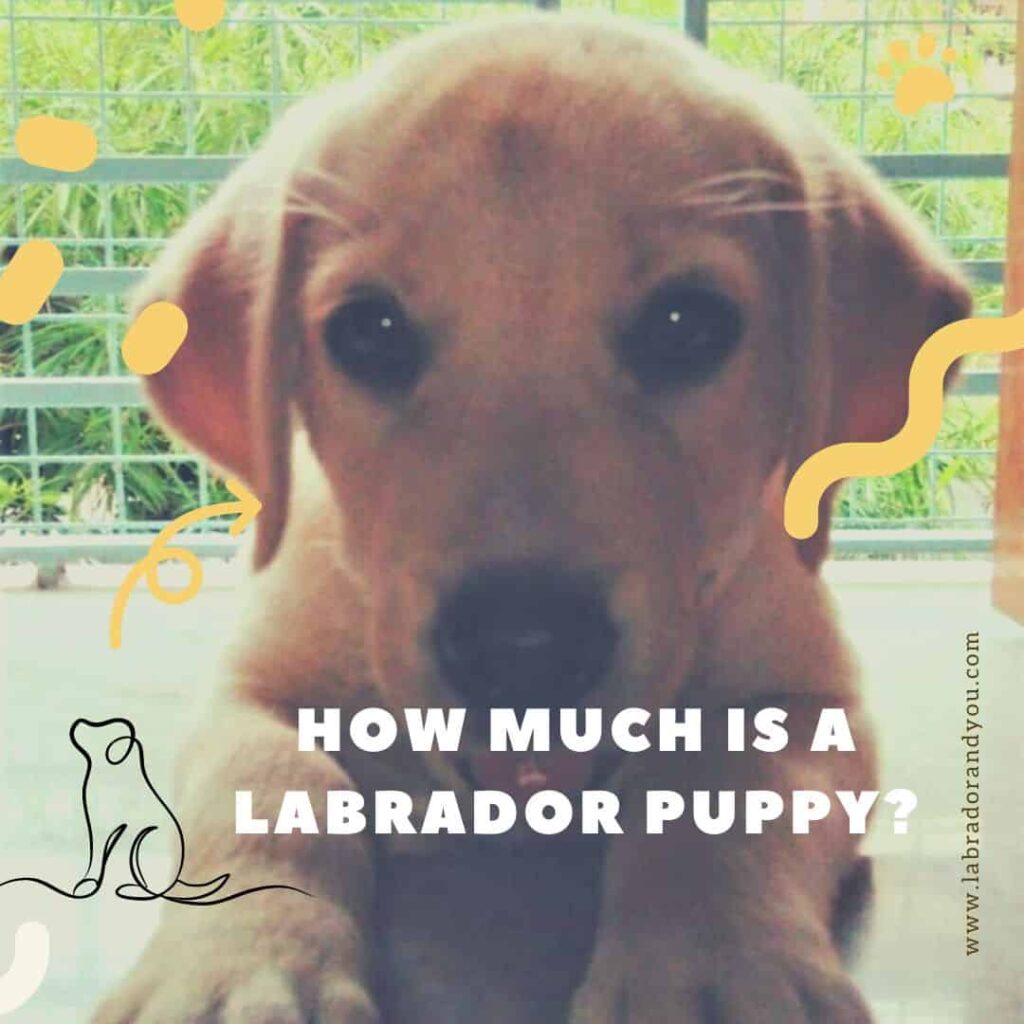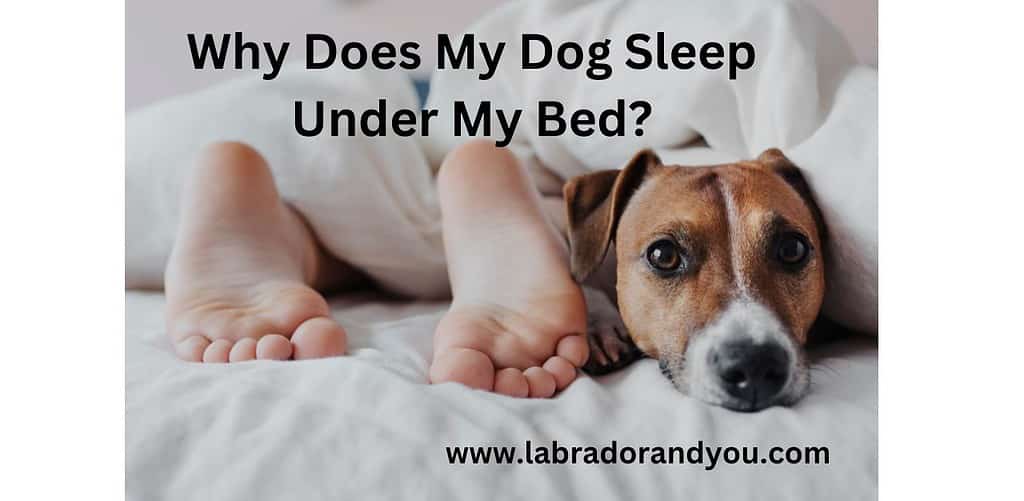As a new puppy owner, one of the most important things you should learn is how to potty train a Labrador puppy fast. House training is a process. Training your labrador puppy to go potty outside can be challenging. Be consistent with your schedule and expectations, and reward your puppy for going potty outside. Don’t punish accidents; pay attention to your puppy’s body language for signs that they must go potty.
Getting started: Labrador Puppy Potty Training?
Today we will look at questions like,
- When are labs potty trained?
- How to train a Labrador puppy for potty?
- House training a lab puppy without crate training.
- How to deal with setbacks?
- My own system of training a labrador puppy.
Whether you call it housebreaking, house training, or potty training, you can start teaching your pup the right place and way to potty as soon as you get them home.
You will be able to avoid “accidents” if you start early. More the effort in the early days, the better the results will be. Pups like to pee at a place where they peed before, so starting early helps.
No matter when you start potty training, you will have to go through three stages. You can train an eight-week-old lab puppy the same way as a 3 month old lab puppy. The three stages of a Labrador puppy potty training are:
- Establish a potty area so your pup learns where to potty.
- Learning self-control so that they start holding on.
- Toileting on their own.
We will look at every stage. These stages are standard across indoor and outdoor training methods. First, here are some basic command words to train a lab puppy.
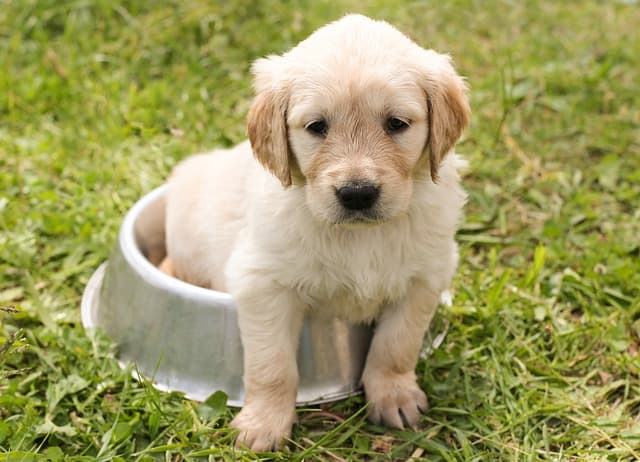
Basic Commands to Train Your Labrador Retriever Puppy
Training your lab puppy with basic commands is essential for creating a well-behaved companion.
Sit
The sit command is relatively easy to teach and can help to calm your puppy down when they get excited. Hold a treat above their head and slowly move it back towards their tail as they follow it. As they lower their rear end to the ground, say “sit,” and reward them with the treat.
Stay
The stay command teaches your puppy to stay put until you release them. Begin by having your puppy sit, then say “stay” while holding your hand before them. Take a few steps back and reward them with a treat if they remain seated.
Come
The come command is essential for keeping your puppy safe in unfamiliar situations. Start by saying “come” in a high-pitched and excited tone, then take one or two steps back. When your puppy follows, reward them with a treat.
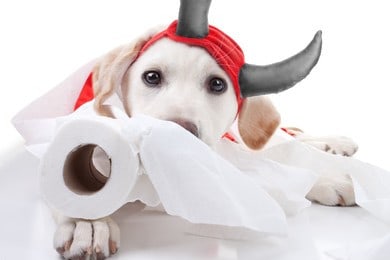
Potty Training Methods for your Lab Puppies
There are two primary methods. One is better for lab parents who always stay with their puppies at home. The other is for parents who spend their time out during the day. First, let’s understand one important facet:– crate training your puppy. This will help you house-train your puppy as well as confine your puppy for better control.
How To Make Your Lab Puppy Crate Trained?
Using a crate is a popular method of house-training lab puppies for potty training. You can teach them to associate the crate with positive experiences and reduce accidents in the house. First, you should know what crate training is and its benefits. Crate training involves using a crate as a tool for training your puppy.
The crate is a safe and secure space for your puppy to rest, sleep, and retreat when anxious or stressed. Using a crate has several benefits to crate training your puppy, including:
- Reducing accidents in the house
- Helping your puppy feel safe and secure
- Giving your puppy a designated space to rest and sleep
- Making it easier to travel with your puppy
- Preparing for Crate Training
Before you begin crate training, you must ensure you have the right equipment and set up the crate in the right location.

The Right Crate
The first step is to select the right crate for your lab puppy. The crate should be big enough for your lab puppy but not so large that they have enough space to go to the bathroom in one corner and sleep in the other.
Choosing the Right Location
Next, look for the right location for the crate. It should be in a quiet, low-traffic area of your home where your puppy can feel safe and secure.
Making the Crate Comfortable
To make the crate more comfortable for your puppy, add a soft blanket or bed and a few toys or chews to keep them entertained.
Getting Your Puppy Used to the Crate
Once you have the crate set up, it’s time to introduce your puppy to it.
Introducing the Crate
- For starters, open the crate door and place treats inside to encourage your puppy to investigate.
- Once they start going in and out of the crate on their own, you can close the door for short periods.
This way, you can gradually increase the amount of time they spend in the crate.
Feeding Your Puppy in the Crate
Feeding your puppy in the crate is another way to get them used to the space. Start by placing their food bowl near the crate and moving it closer until it’s inside.
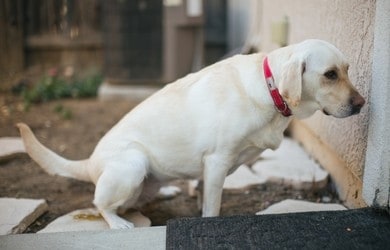
Gradually Increasing the Time in the Crate
Start slowly when crate training your puppy. Begin with short periods in the crate while you’re home and gradually increase the amount of time they spend in the crate.
Now we will explain each potty training or house training method to help you choose the best one.
Method 1: House Training a lab puppy to go potty outside
It is an excellent method for pet parents who can stay home with their pup for the first few weeks. It focuses on teaching your lab to go potty outside from the beginning. Further categorized into three clear stages.
Stage 1: Establish a Toilet Area for your Labrador Retriever Puppy (8-9 Weeks)
The first stage involves teaching your new labrador puppy to pee and poop in the right place. Prevent them from going to the toilet at the wrong place. Restrict your puppy to a washable area of your home. The first task is to get your lab to this same spot many times right:
- After waking up
- After eating
- After playing
- Anytime when their bladder is full
Oversee your Labrador puppy
The next job is to oversee your lab when their bladder is full or when they need to pee or defecate. You can check this by cuddling them in your arms or crating them. Ideally, use the cuddling option. Crate training takes time
Recognize the Schedule When Your Lab’s Bladder Gets Full
The best way to predict the schedule is by watching the clock. You should spend your first few days analyzing how frequently they use the toilet. If that is not possible, assume that your lab needs to pee every half hour. Adjust things accordingly.
For example, when you notice that your lab is peeing every thirty minutes, it means his bladder is getting full after every twenty minutes. You have to do some guesswork while house-training a Labrador puppy. Don’t worry, as you will soon find out the natural pattern of your pup.
Tips For Successfully House Training Your Puppy To Use Outdoor Toilet
Most lab puppies do not want to go out for toilet. In the beginning, accompany them when they prepare to go potty outside. Stay with them out while they empty their bladder. Yes, it may take a while. But we recommend staying with your pup outside for a faster house training process.
How to Plan Coming Indoors Early?
Supervise the dog closely. Take a call if you must come inside while your lab puppy relieves himself. Hold the puppy in your arms if it doesn’t work out immediately. This is a new puppy problem that will pass.
Once done, you need not worry about doing it again. Moreover, if you could get your lab puppy to pee on command, nothing like it.
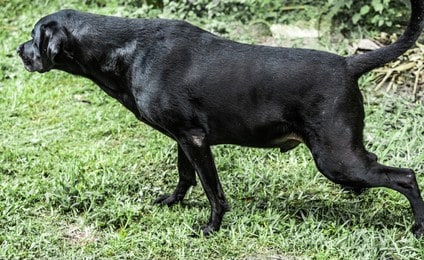
Reward Your Pup’s Success
The first few days of potty training a Labrador puppy will be difficult for you and your pup. With time, he/she will tell you when they need to go potty and do it themselves. Do praise him or give him a treat when he does that. Keep the treat in your hand and give it to your puppy when he is done.
Rewarding success and ignoring a potty accident is the best and quickest way to potty train your lab puppy.
Stage 2: Teach them Self Control
After the first stage, your pup will develop some self-control. The dog can now hold himself longer when his bladder is full. Moreover, you will not have to supervise the pup as closely as before. Make sure that their spot is easily accessible to them.
It will give your lab puppy confidence that they don’t need to overdo it, resulting in an accident. It is critical to look for signs your pet will give when they need to use the toilet.
Supervise Your Pup Using the Crate
At this stage, your pup should be pretty familiar with his crate. Start using it to stretch the gaps between the toilet trips. If you don’t make your puppy wait too long, he will not pee on the bed.
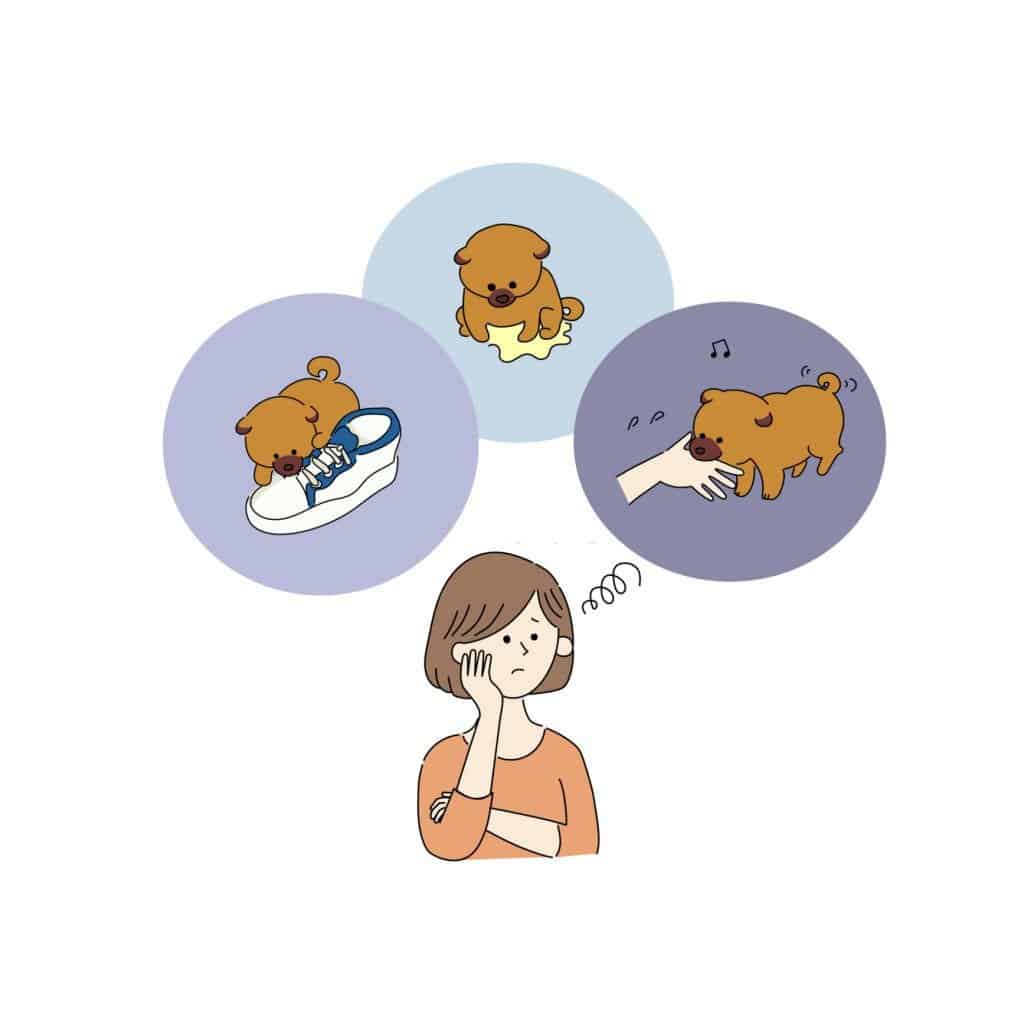
Possibility of Accidents
The second potty training stage is a bit difficult for the lab puppy. Many lab puppies struggle to control themselves owing to the gaps between toilet visits. If you don’t monitor, your lab puppy can have an accident. In these cases, you should reduce the gap for a few days. Then, slowly keep on increasing the gap again more gradually with time.
Stage 3: Start Extending the Clean Zone For Your Pup
At this stage, you will start seeing results for your hard work. Stretching the toilet breaks further once you feel your puppy is comfortable outdoors. And this is when you can start introducing the rest of the house to your lab. Start slow and shorten the break for a few days if there are accidents. Labrador puppies thrive on routine
Method 2: Potty Training Your Pup to Look for an indoor potty spot
If you cannot take your puppy out frequently during the initial days, you must potty train them to do it indoors. Take them out whenever possible. However, until they get their vaccinations, these indoor potty training tips will help. This house-breaking process works without a crate. They have to use sheets of newspaper or pee pads.

Toilet Training Your Puppy Using a Pad
Here’s how:-
- Restricting your pet to a small room with washable floors is best.
- Cover the floors with puppy pads and keep their bed in one corner.
- You can build a sturdy puppy playpen if you do not have a small room.
He will use the pads when your pup leaves the bed to pee. Puppies instinctively pee in the place where they have peed before. So, you can start reducing the floor area in the next few days. You will notice that the puppy will begin using the covered floor area.
Reduce The Toilet Area
After the first week, reduce the floor area covered with puppy pads. With time leave a small area closer to the back door. Your puppy can wait until someone opens the door, and then you can move the pad outside. It is best to do this when you are free or have a long weekend.
You will soon find that your pet is ready to wait till they are clean and dry, even with the puppy pads present.
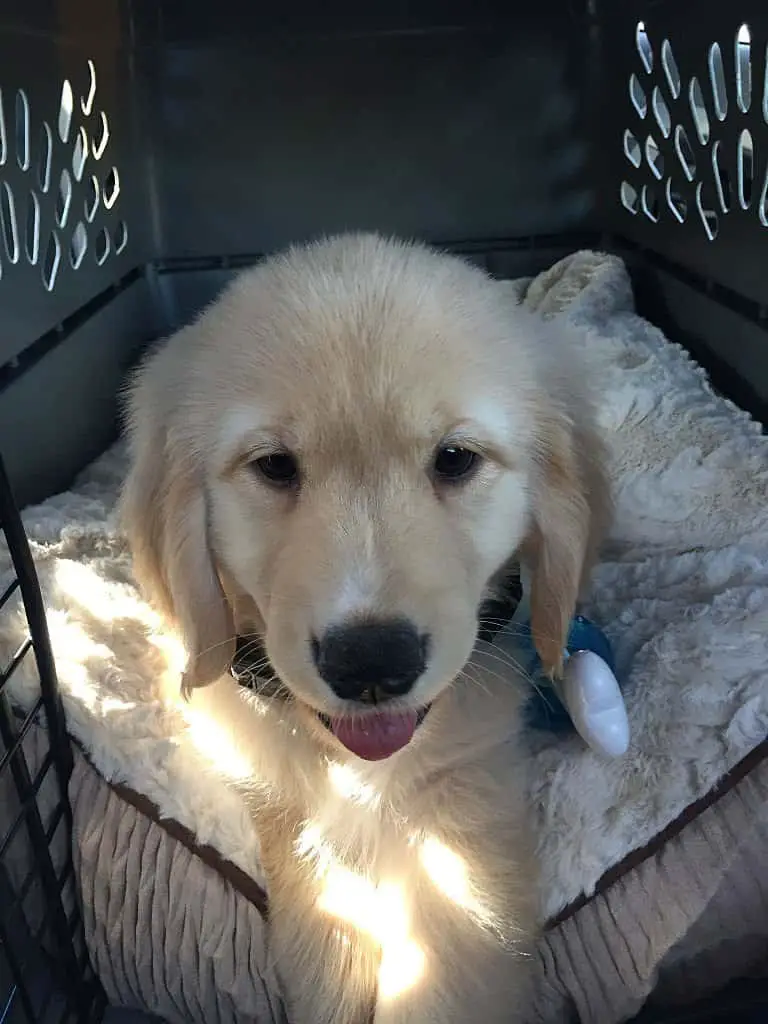
Additional Tips For Potty training Your Labrador Retriever puppy
Continue Supervising Your Pup
Keep monitoring your pup throughout the training. And take them to their toilet spot in the starting days when they show signs of a full bladder. Even though your lab might not want to soil the bed, sometimes their body cannot hold it any longer. Thus constant supervision and monitoring help to successfully house-train them
Potty Train Your Puppy While You Work
A labrador retriever puppy needs company as they are small. Thus, leaving them alone all day is not recommended. They need care and support in their initial days. Arrange for someone to look after your dog while you are out working. Maybe come in at intervals to play with them and take them out.

Potty Training Labrador Puppies For Night
Predicting how long your pup can last at night without a toilet break can be difficult. Young puppies can last from midnight to early morning. It is beyond your control; thus, you must understand and take their routine accordingly.
Make your young puppy sleep near you in a crate or deep box to ensure safety. Then, when he whines or stirs, take your puppy to the designated area. Do not fuss over him, and praise him once he is done. He may get playful, but ensure you return him to his sleeping place.
Focus on Getting More Sleep
With time you will understand your pup’s peeing/potty pattern and know the schedule. Move him to a permanent sleeping place. Set the alarm per their toilet schedule. Move that alarm closer to the morning in time. While young, they will find it difficult to last through the night. However, with time their bladder control gets better

How To Change The Habit of Your Puppy Pooping in the House?
House training is complete when you train your puppy to poop and pee at the right place outside. Take the dog out right from the beginning and gradually try and increase the gaps. A dog is only fully housetrained if it can control itself between toilet breaks.
They will try not to pee inside as they understand that the place is only outside. Mistakes will happen as your pup’s bladder is small. You should take action straight away and move swiftly in case of accidents. Take your dog out often and clean up the area inside the house where they have peed before thoroughly.
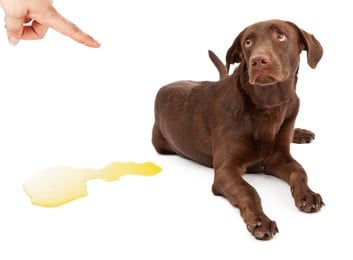
Can Punishment Impact the Toilet Training Process?
You are wrong if you think that punishing your dog will help in the potty training process. It is not only horrible but will also be ineffective in the process. Never punish when you train a lab puppy or any other dog breed. It is cruel and traumatic.
What Are The Other House Training Methods?
Some of the most effective potty training methods are as follows.
Open Door Method
- Train your dog to go to the door he has to use every time to go out for the toilet.
- Take them to the door every time they have to go outside.
- Open the door when the pup goes to the door and start using commands like “go potty” to complete the task.
Know Your Puppy Method
Most puppies need to go to the toilet after waking up, after a nap, or after meals. Ensure you understand their potty pattern and take them out during the hours.
Potty Place Method
- Pick an area where you would want your pup to pee and poop.
- Puppies like to go to the same place that they have used earlier.
- Set him someplace they can continue using and start going independently.
- Reward them when they use the right place.
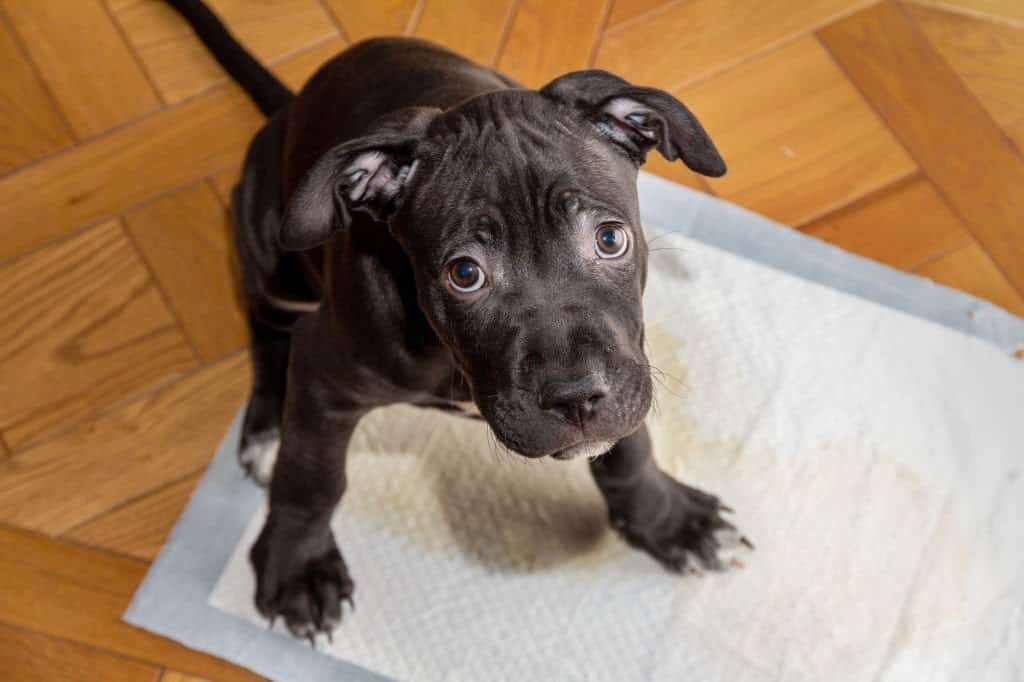
What To Do Between Scheduled Bathroom Breaks?
Grant Free Time
After a toilet session, let your dog have free time around the crate without the leash. Let them roam around and explore. It will help them stay alone in the future when you want them to continue living unsupervised.
Check for Signs That Your Puppy is About to Poop
Supervise your pup during their free time for signs that they need to go to the toilet. Some common signs are:
- Sniffing
- Whining or barking
- Restlessness
- Running in circles
- Scratching the door
Ensure to End Free Time Before the Scheduled Break
After your puppy has free time, end it around 20 minutes before the next toilet break. If you get closer to their toilet time, the chances of mistakes will increase.
What to Do if you Catch or Don’t Catch Your Puppy Making a Mistake?
If you catch your dog making a mistake, clap your hands with a loud no.
The intention should not be to shock them but to get their attention. Then, when they stop, carry them to their toilet spot. You cannot do much if you don’t catch your puppy while they are making a mistake.
Getting angry or punishing them will be ineffective. Instead, when you come across a mess, deep-clean the area.
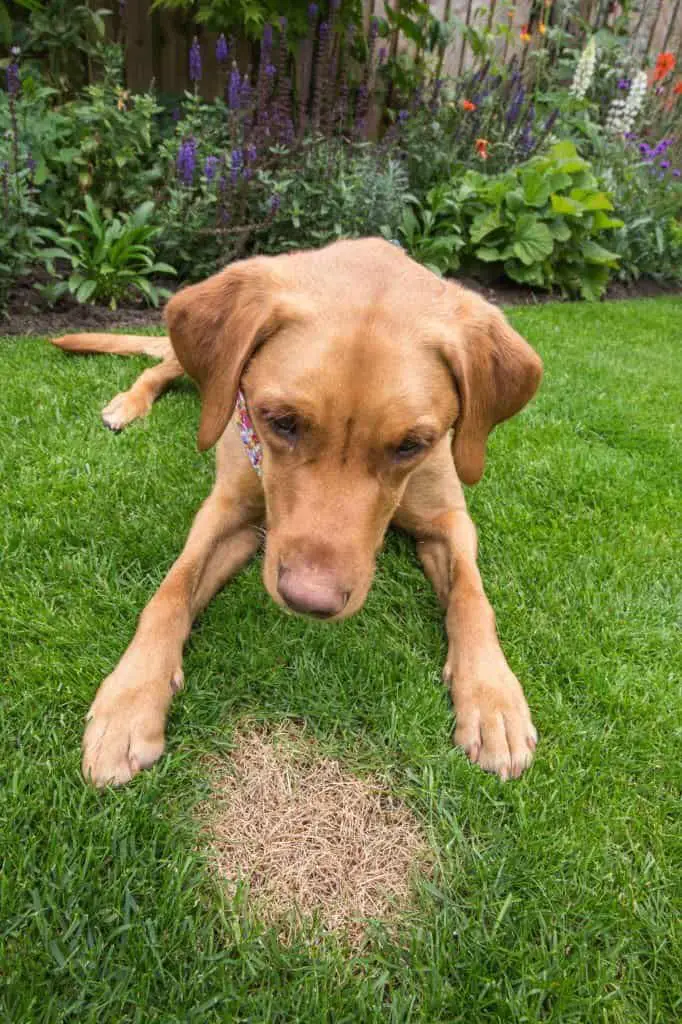
How I Potty Trained Sinu, My labrador Retriever puppy?
I’ve developed a highly effective potty training regimen for labrador puppies. If you’re a first-time dog owner, don’t worry – I’m here to guide you through the process.
Designated Potty Spot
First, set up a designated potty area in your yard or home. Use a specific scent, such as an enzymatic cleaner, to encourage your puppy to enter the designated area. I’ve found that using a grassy scent spray works wonders.
Feeding Schedule
Next, establish a consistent feeding schedule for your labrador puppy. Feed them three times a day at the same time. Keep a close eye on them after each meal. Most puppies must go potty within 30 minutes of eating or drinking, so be prepared.
Multiple times
Throughout the day, take your puppy out every two to three hours or more often if they show signs of needing to go. When you take them out, always bring them to the designated potty area and use a specific command, such as “go potty,” to encourage them to do their business.
Crate or Playpen
If potty training a labrador puppy indoors, I recommend using a crate or playpen to confine them when you cannot supervise. This will help prevent accidents and allow you to catch your puppy in the act if they need to go potty.
Positive Reinforcement
When your labrador puppy successfully follows the house routine, praise and reward them with a treat or playtime. This helps them understand that going potty in the right place is good.
Urine detector light
If you’re having trouble with accidents, I recommend using a pet urine detector light to find hidden messes. You can clean up accidents more effectively and prevent future accidents in the same spot.
FAQs on House Training Labrador Puppy
Are Labradors easy to potty train?
Most puppies complete the house training by the time they are 4-6 months old. Of course, the process will have ups and downs, but they learn. Some pups might learn quickly, while others may take time and have accidents.
How long does it take to fully potty train a Labrador puppy?
On average, most labs take between 4-8 weeks to complete potty training. It will take a bit longer if you are a new dog owner. It isn’t possible to toilet train a puppy in 7 days.
How do you stop a Lab puppy from pooping in the house?
Mistakes will happen, but you shouldn’t punish them. Instead, try to take them out more often and praise or treat them when they poop outside. Also, clean the area inside your house thoroughly.
What is the best age to potty train a lab puppy?
There is no right age to potty train a Labrador retriever puppy. However, you should begin potty training as soon as possible. The chances to successfully house-train a lab puppy go higher if you begin sooner.
What are the best potty training trips for a Labrador Retriever Puppy?
- Take your pup out frequently(every hour) in the first week through the same door.
- Use the same spot every time and give them a voice command like “Go now.”
- After they are done, praise them and give them treats.
- Then, keep on increasing the duration of breaks gradually every week.
How do I teach my dog to go potty on command?
Use a cue word like go every time they go for the potty. Accompany that will praise or treat. Repeat the command multiple times every time they go to the toilet.
How do I get my dog to poop during the day rather than at night?
A new puppy will face difficulty in controlling their bladder during the night.
- You need to crate them during the night till they are old enough to hold their bladder.
- Try to move the last meal earlier and take them outside before sleeping.
- Take them out every morning after waking up.
With time they will learn to hold themselves longer through the night.
How Long Can a Lab Puppy Go Without Peeing?
When you start potty training, take your pup out frequently. In the early days, a dog can make mistakes. After that, you have to train them to control their bladders so that the time between toilet breaks will get longer with time.
Final Thoughts on Potty Training
Remember that house training will not happen overnight, as it is a process. There is no straight line. You must go through the ups and downs. Sticking with the process and giving your pup enough time to learn will make them fully potty trained and avoid future accidents.
Author Profile
- Site Owner And Dog Lover
-
Aritra, the founder of Labradorandyou.com, is a lifelong dog lover whose passion ignited for Labradors for their loyalty and intelligence. With extensive research and personal experiences, Aritra has become a Labrador expert, offering a rich resource on the breed. Labradorandyou.com provides reliable, timely, and evidence-based information, including Labrador-specific product reviews, training techniques, and care tips.
Labradorandyou.com was born out of Aritra's passion and his desire to share his profound knowledge about the breed. The site serves as a comprehensive resource, offering a wealth of up-to-date information for Labrador owners and enthusiasts alike
Also by the author
-
 Lab-TypesNovember 17, 2023Old Dog Seizures: Causes, Symptoms, and Treatment Options
Lab-TypesNovember 17, 2023Old Dog Seizures: Causes, Symptoms, and Treatment Options
-
 Lab-TypesNovember 17, 2023Why Is My Dogs Poop Yellow? 8 Reasons & Solutions
Lab-TypesNovember 17, 2023Why Is My Dogs Poop Yellow? 8 Reasons & Solutions
-
 ReviewsNovember 17, 2023The Only Hill’s Science Diet Review You Need To Read
ReviewsNovember 17, 2023The Only Hill’s Science Diet Review You Need To Read
-
 Lab-TypesNovember 17, 2023How To Adopt An Emotional Support Dog?
Lab-TypesNovember 17, 2023How To Adopt An Emotional Support Dog?

